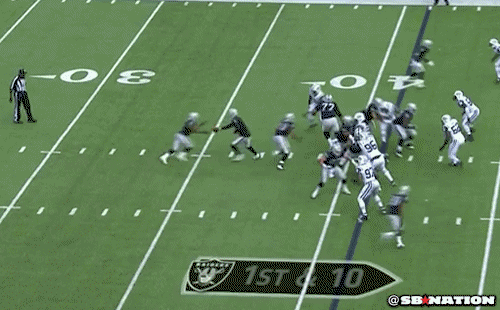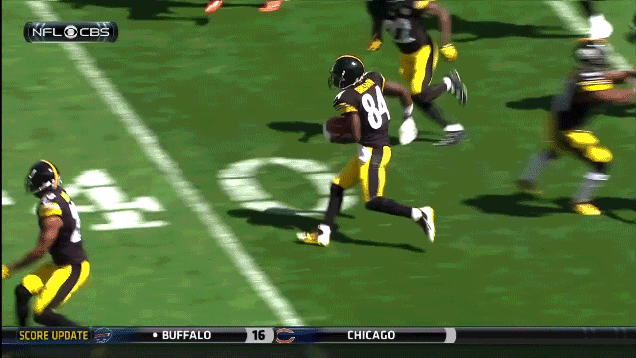Thursday Night Football is only a
few years old, yet it is already entrenched in the minds of NFL viewers. We all
know what to expect from these games. Sloppy play, lots of penalties, and an
increased rate of injury are almost synonymous with Thursday Night Football. They still draw fantastic ratings, but no
one particularly looks forward to these games—not the fans, not the coaches,
and definitely not the players.
The shortened week leads to the
lowest quality of football and can have far reaching consequences to those who
attempt to play without allowing their bodies to properly recuperate from the
previous Sunday’s game. A couple times last year there were even teams who
couldn’t find 46 healthy players to have active for the game, and with a short
week there is no way they could bring someone in off the street and hope to
have them contribute even on special teams. Thursday Night Football is usually
ugly, rarely competitive, and on the whole barely worth watching.
But as bad as it is, it’s here to
stay. There is too much money involved, and as we have seen repeatedly over the
past few years, the league office will do whatever it wants if there is
significant money at stake. Earlier this year a bidding war broke out for the
rights to broadcast Thursday Night Football, eventually going to CBS for $275
million for a single year. For comparison, the average NFL game brings in about
$6 million in ticket sales. Selling the broadcast rights to thirteen games
produced as much revenue for the NFL as the ticket sales for three weeks of action. We’re talking about the rights for the NFL’s lowest rated primetime
games, a value that will only increase during the next round of bidding next
year. The NFL is not getting rid of Thursday Night Football, no matter how many
people complain.
As people have realized this over
the past couple years, they’ve begun to try to figure out solutions to this
problem. We need to find a way to make the games better while satisfying the
fans, the coaches, the players, and—most importantly—the league offices. Many
propositions suggest playing each game after both teams have had their bye
week, but there are several reasons this wouldn’t work. First of all, the bye
weeks only occur from Week 4 through Week 11, and the Thursday Night Games run
through the entire season. It might be possible to convince the NFL to cut a
couple of the games, but they seem to like the idea of every team playing at
least once on a Thursday. We still need sixteen games, and it wouldn’t be
possible to coordinate the byes. The players wouldn't be happy about this change either. Every team gives their players a week off from practice when
they’re on the bye, giving them time to spend with their families or travel.
Placing a Thursday game immediately after the bye would force the teams to cut into
their bye weeks for practice, essentially splitting the players’ short time off
into two smaller chunks.
There is a solution to this, and
it’s one so obvious that it should have already happened. Players don’t want to
sacrifice their bye weeks, but these games can still be coordinated with a bye
week if we give every team an additional bye during the season. Expand the
season to 18 weeks, give every team two bye weeks, and schedule all the
Thursday games for the week following one of the team’s byes. Under this
schedule we would need bye weeks to run from Week 2 through Week 15, but in the
extreme weeks we could restrict it to only the teams playing in the following
Thursday’s game, to prevent fans from having to go two full weeks without
seeing their team early or late in the season. These teams would still have a
normal bye week during the middle of the year, and they wouldn’t have to worry
about playing a long stretch of uninterrupted games. All 32 teams would be able
to play on a Thursday (including the two additional Thanksgiving games) and
none would have to do so on a shortened week.
The reason the fans will like
this is fairly simple: the football will not be nearly as terrible. Rather than
watching players coming off four days rest, they will be watching players who
haven’t played a game in a full eleven days. Their bodies will be as recovered as
possible from the pounding of their last game, and they will have had plenty of
time to study the tape of their opposition and practice their team’s game plan.
We will see a much higher quality product, better even than a normal Sunday
game. This should lead to more competitive games and fewer sloppy mistakes.
Coaches will love the extra time
just as much as the fans. Four days isn’t nearly enough time to study tape, prepare
a game plan, and implement it among the players. Most coaching staffs have to
begin preparations even before their previous game is played, dividing their
resources and hurting themselves for Sunday’s matchup. An extra week will
eliminate these concerns, giving them the maximum time possible to prepare
their team for the competition. Coaches love bye weeks, and adding another one
to the schedule will only make their jobs easier.
No one has reason to love this
more than the players. It is borderline criminal to ask people to play two
football games within a span of four days. The human body simply isn’t capable
of handling that sort of punishment, and you see that in the abnormally high
rate of injuries that take place in Thursday games. The NFLPA has spent the
past few years fighting to improve the conditions of their players, trying to
prevent injuries that can derail careers and harm long term
futures. Fixing Thursday Night Football has long been one of their top priorities,
and under this plan they would be able to do so without having to sacrifice
their bye week.
So that leaves only one faction
to worry ourselves with: the faction with all the power. The NFL is a league
run by the owners, and they have shown repeatedly that they don’t give a damn
what the fans, the coaches, or the players want. If something doesn’t help make
them money, they have very little interest in it. Fortunately, this plan will
bring plenty of extra money to the owners’ pockets.
The number one issue on the
owners’ minds over the past few years has been the possibility of expanding the
season to 18 games. The reasons for this are obvious—more games means more
tickets and more television viewership, leading to more money—but to this point
they have been shut down by a lack of public support and fierce resistance from
the players, who don’t want to risk additional games on an already brutal
schedule. With the recent lawsuits and negative publicity around the concussion
issue, it seems unlikely that the schedule will expand anytime soon. The owners
are stuck with a 16 game season.
Adding an additional bye would
have some of the effect of adding an additional two games on the schedule. The
number of games would still be the same so there would be no increase in ticket
sales, but an extra week of games means an extra week of television. There are
some viewers who will still only watch the games played by their favorite
teams, but there are plenty of fans who will tune in every week no matter who
is playing. The networks would definitely be willing to renegotiate their
contracts to account for this additional week, bringing in more revenue for the
league and the owners.
It is rare to find a solution to
a problem that satisfies everyone involved, but in this case it’s hard to find
a problem with this plan. There may be a few small kinks to work out, but this
is the sort of thing that should already have happened. We’ve suffered through
enough miserable Thursday night games over the past few years. It’s time to
make a real effort towards improving the competition of these games.















